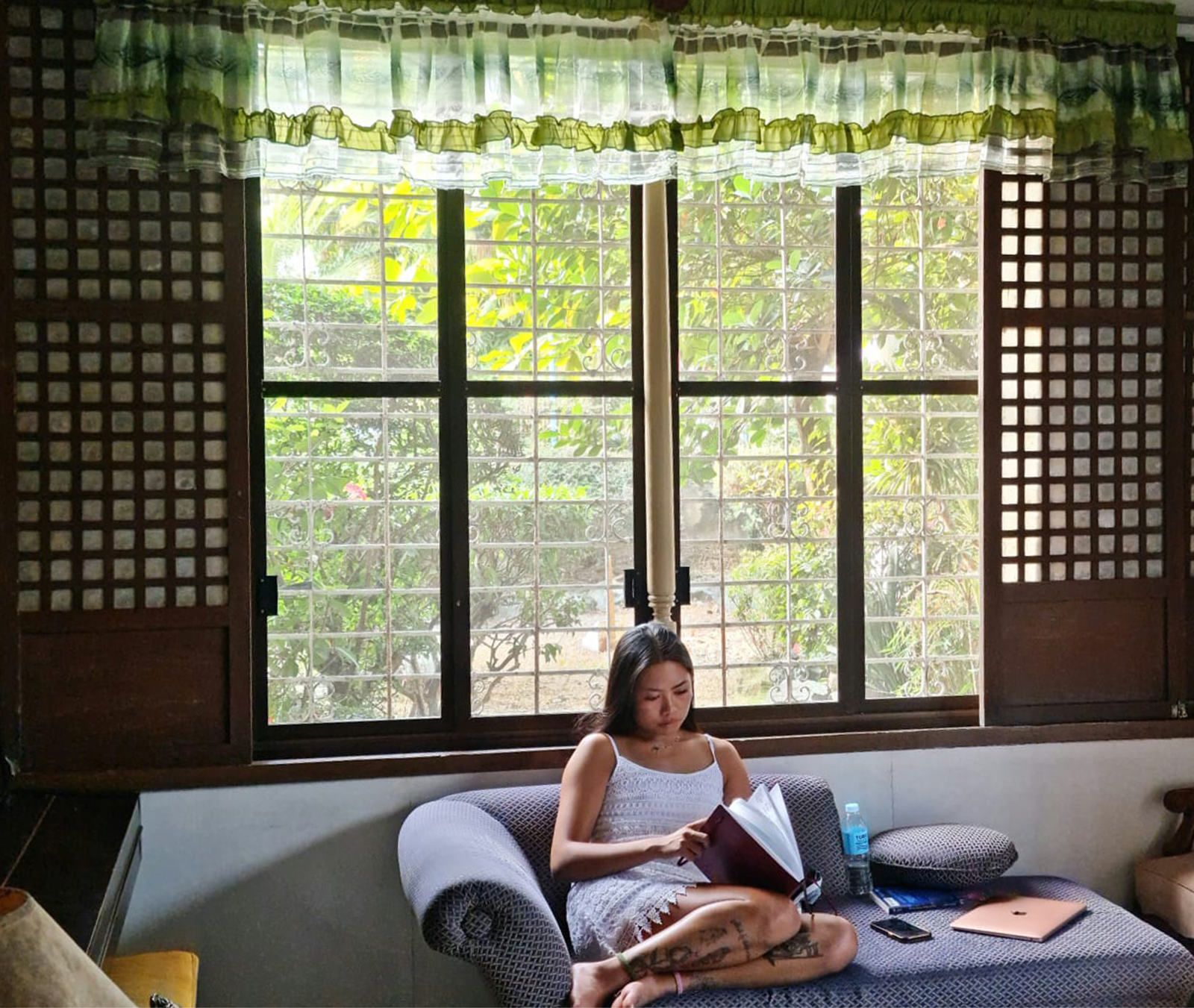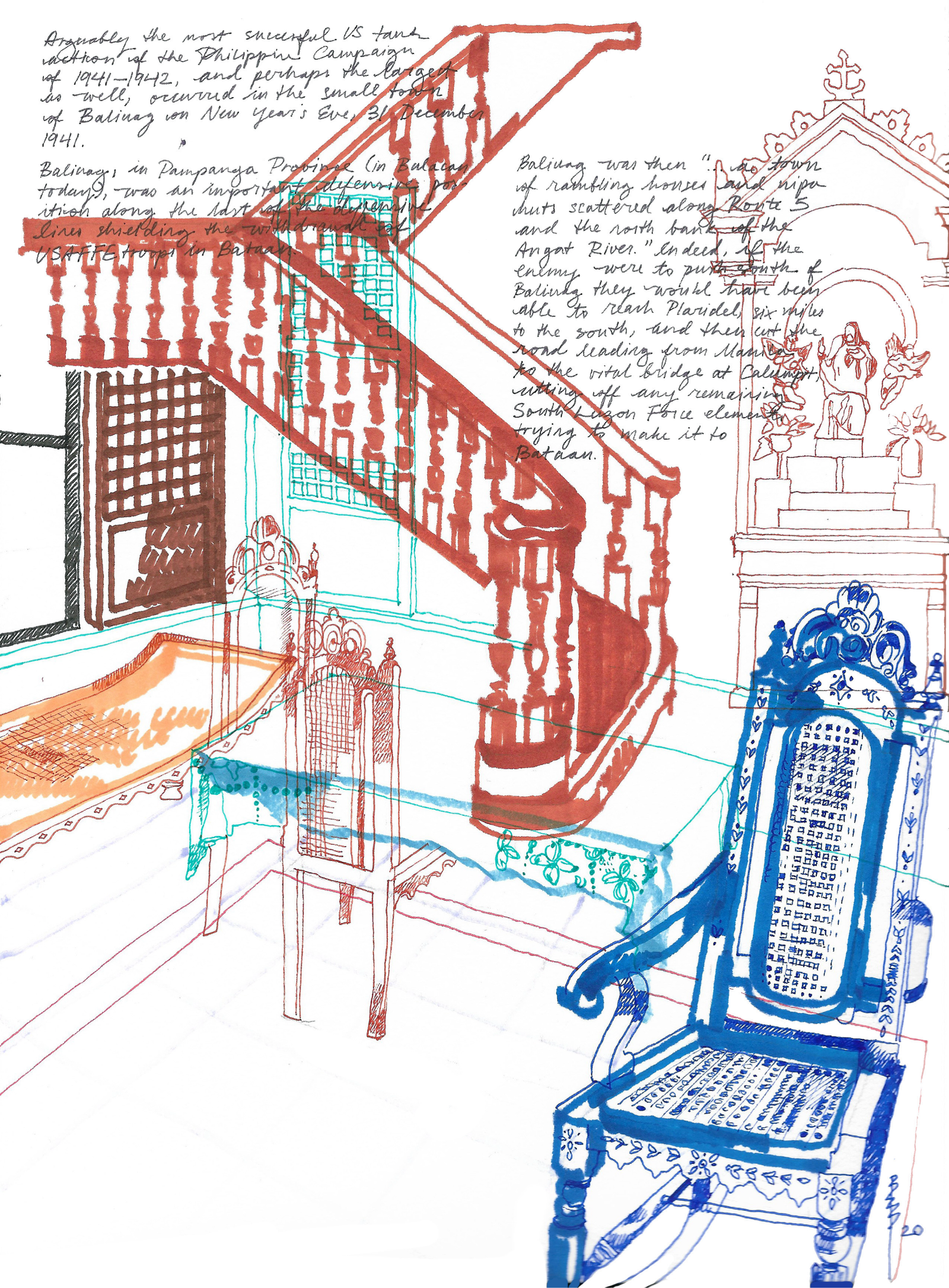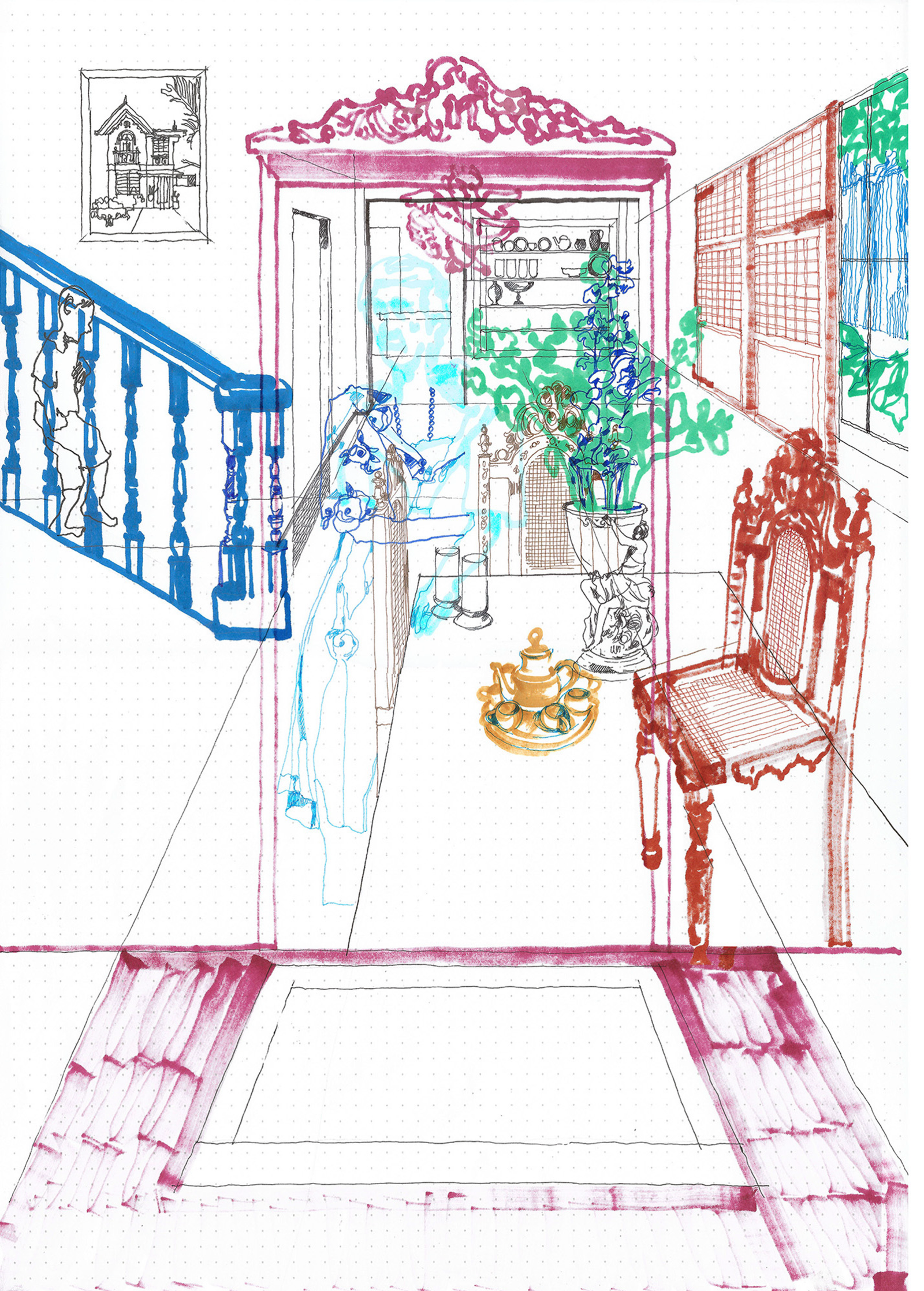Interview Patrick Kasingsing, with Gabbie de la Cruz
Images Bianca Weeko Martin (Architectural Guide Manila)


Hi, Bianca! Welcome to Kanto! Can you share with us what sparked your interest in producing an architectural guide for Manila with DOM Publishers? How has the project’s vision evolved over its nearly five-year development?
Bianca Weeko Martin, author of Architectural Guide Manila: Hello, Kanto! Thank you for having me. Destiny brought me to the project of the architectural guide. I first came across DOM’s City Guide series by chance in Berlin at the age of 21: there happened to be a copy of the Berlin guide lying around in the flat I was renting, and I devoured it, discovering this new city through its buildings and monuments. I admit that at some point I flirted with the dream of one day doing my guidebook—but not with the conviction that it would happen!
Two or three years later, I was traveling in the Philippines and Indonesia for a big family reunion, and while I was there I got a WhatsApp message from my dear friend and collaborator Paul [Meuser] asking if I would be down to put together an exposé for a potential architectural guide for Manila. I was so young at that time and, in retrospect, just completely not ready to write such a comprehensive body of work, but I said yes without even thinking. Thus, the project began. On vacation! It was the first invoice I ever sent.
There was a period in the middle of the five years when I didn’t even touch the project, but this was the time I was honing the research, writing, photography, and networking skills that were necessary for the completion of the book. I was also working on a more artistic project about my ancestral house in Bulacan, which, in my view, laid the spiritual foundation for any work I engage in related to the Philippines. Anyways, in short, I would say that the project’s vision evolved as my capacity to realize it evolved, and my vision at the beginning was to touch and grapple with a city that I didn’t yet know but somehow could feel in my bones.
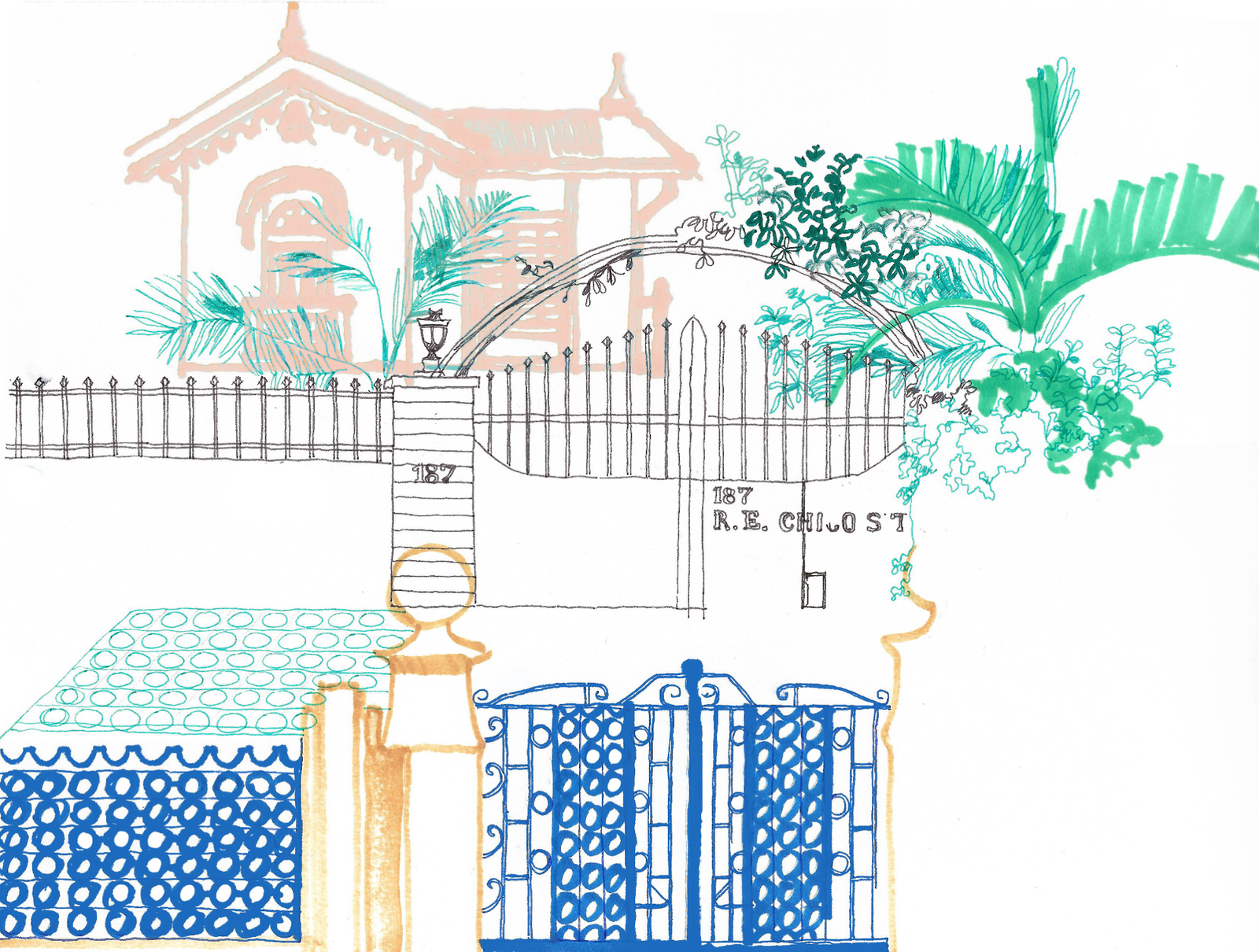

Can you walk us through your research process for selecting the nearly 120 buildings featured in the guide? What critical criteria did you use?
The process felt organic since I had enough time for the building list to accrue. The CCP was the first building I fully encountered, doe-eyed, on that family vacation in 2019. I saw it at a distance from the car window, and it made an impression on me strong enough to instill a belief that an architectural guide to Manila was necessary. From there, I bought the books of Ar. Gerard Lico, who then became a collaborator for the book, and I carefully made note of all the “Philippine icons” that were located within Metro Manila and thus within the geographic boundaries of the book. I put together a spreadsheet. I asked family and friends for opinions. I followed a bunch of Instagram pages showcasing architecture in the Philippines (like Brutalist Pilipinas!), flagging buildings that were interesting, surprising, and memorable. This was my way of keeping an eye on Manila’s architecture while I was back home in Toronto.
When I decided to live in Manila for half a year in 2022 for fieldwork, photographing, and visiting buildings all over, the list continued to grow. I would sometimes stumble upon a great building or be led to one through a colleague or on a tour. I was open to having new buildings presented to me by architects and companies who were interested in being involved in the book, but if I met them and came away feeling that they were condescending or ill-intentioned, I would not include their projects. So, I’m proud to say that my critical criteria also involve kindness.
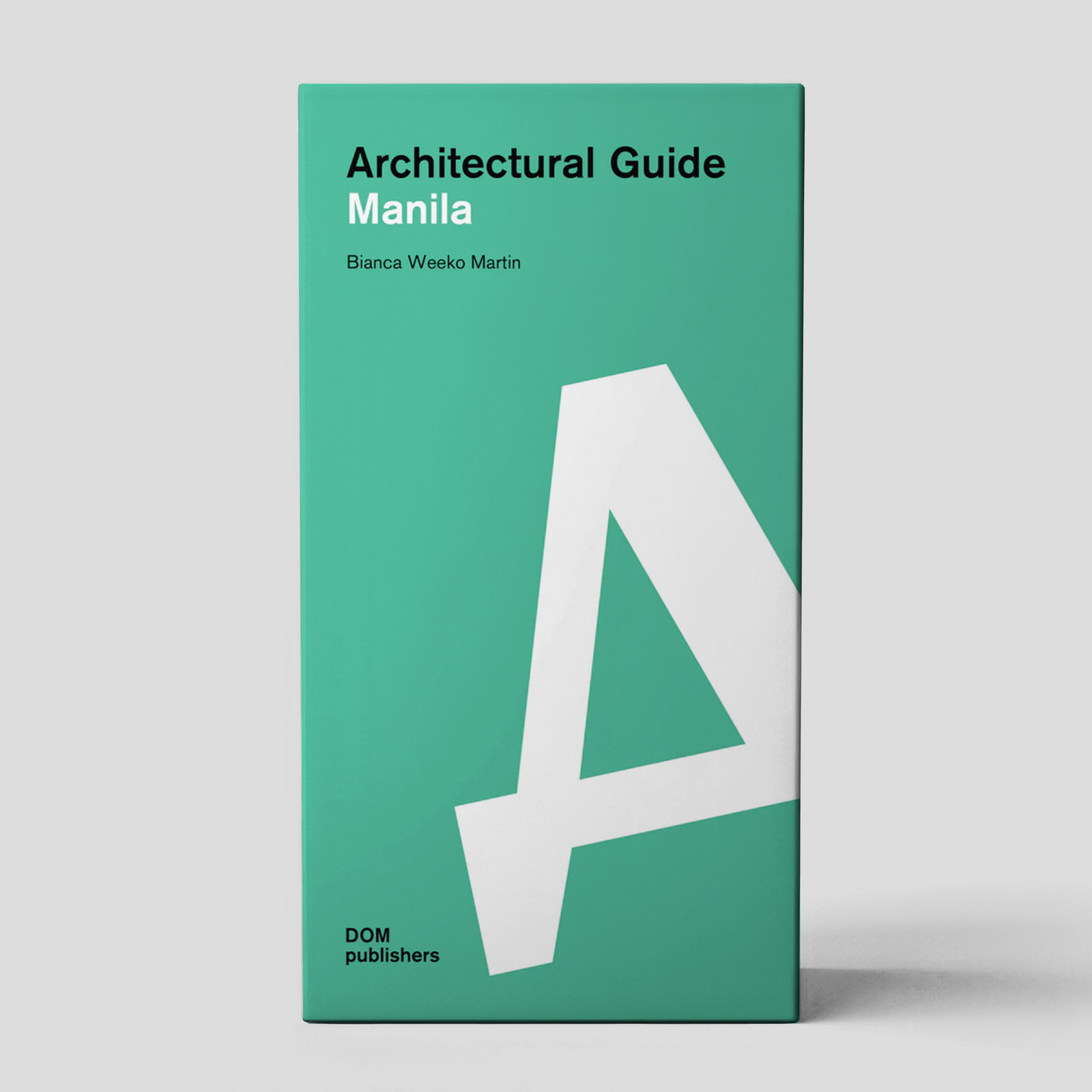

A question you probably saw coming: How did the pandemic impact your research and production process? What were some challenges you faced, and how did you overcome them?
The pandemic happened right before the time I was initially supposed to travel to the Philippines, and at the time, I was gutted. I also had to deal with significant challenges and stress on the logistical side of things, as the pandemic had put financial pressure on the publisher, necessitating a minimum quantity of books to be pre-financed before I could even deliver my manuscript. So I’d say my research and production process was dramatically interrupted by the additional responsibility of being a salesperson (which I’ve now learned I am terrible at!)—I had to wear so many hats. At some moments I just felt like giving up on the book entirely. But as you can see, so much of this project now is about looking back and retrospectively appreciating the timing of things… I should’ve had more faith! Ultimately, the pandemic gave me some buffer time to become a better author, and pushing the launch back to this year has lined up with many successive opportunities (fingers crossed!) and, ultimately, allowed me to celebrate the project entirely, free of restraint.
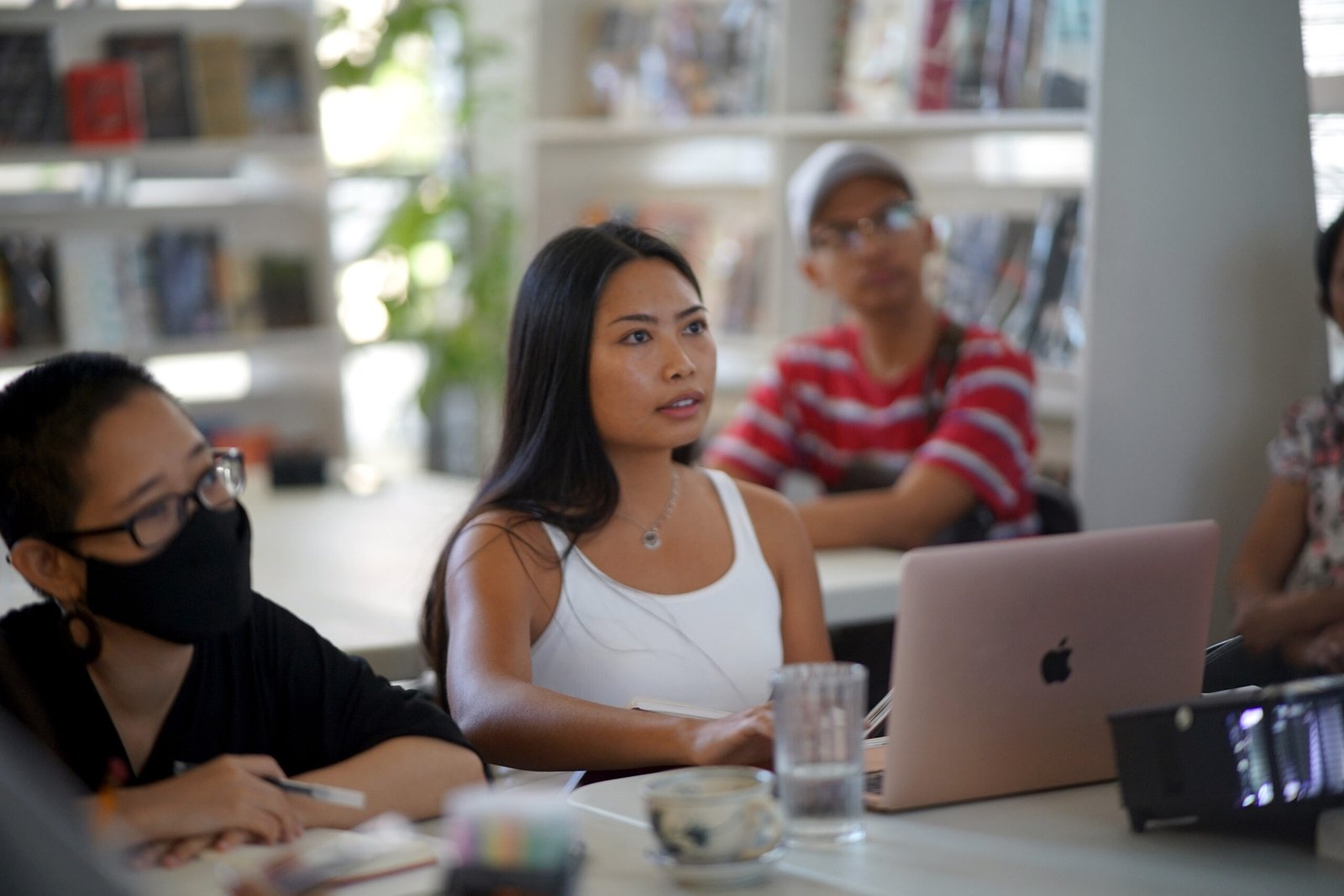

As part of the Filipino diaspora, how did your background and experiences shape your perspective while working on this guide?
The perspective that informs this guide combines research-based knowledge and total naïveté. Remember that I didn’t know any of the nearly 120 buildings in the book five years ago. I put a lot of trust in first impressions and intuition, but I also worked hard to acquire the knowledge I needed. My great naïveté led me to spotlight buildings I liked without bias, to the surprise of some family members who had become numb to these structures from overexposure. For example, I have titos and titas who worked at the Heart Center or taught at Legarda; I know people who commute through Cubao every day and forget that the Araneta Coliseum was the venue of the Thrilla in Manila! So, I think that this “fresh” perspective gives this guide a particular character, and it helped me to look at the writing process itself as something generative and cathartic.
As for the Filipino diaspora, I am lucky to have always been surrounded by Filipino Canadians growing up in Toronto. My community has provided me a throughline across my interests in architecture, art, and athletics. I felt and will always feel a deep motivation to show the Filipino diaspora a side of their heritage that they might not know about or have access to. Many of the Filipino-Canadian friends in my circle are already engaged in different aspects of this cultural heritage, but the route that I can offer, the built environment, is very tangible, and it’s tied up with many different professions and stakeholders that encourage a certain kind of participation in the physical world around us.
You bring a unique cultural perspective to the guide, with a multicultural background spanning three countries. How did this influence your approach to this project?
Being Canadian has given me the opportunity to see a “microcosm” of the world within our diverse immigrant population, and it has given me the language to be confident and critical. As someone born in Indonesia, I’d like to think that I have an innate understanding of how to move through the “developing world” and that I have been attuned to the minute differences between Indonesian and Philippine cultures by growing up with my parents. I know that it is a huge privilege to have all these reference points, so I am trying to do as much as I can with them. I’ve worked in firms and studios in Mexico City, Melbourne, and New York City. I studied abroad in Rome. I was inundated with Western architectural references throughout my studies, but they’re not absolute aspirations anymore; they’re just reference points to me. I feel blessed to be able to return to Southeast Asia. I approached the complex question of “Philippine architectural identity” with sensitivity and optimism.
Rattan chair and Through the doorway, from Martin’s work on “The White House” or their family’s ancestral house in Bulacan. Martin shares that the house is built “as a favor, a refuge, a repository.” She adds that “the objects within serve as ornament and as datum for the recollection of collective memory. They are a material assemblage of an archipelago: rattan, harvested from Southeast Asian jungle, the inlaid bone of provincial water buffalo, the shells of windowpane oysters in Capiz. The stair balustrades are the product of local industry; the shrines and statues of religious icons—moments reserved for adoration, remnants of the Spanish Catholic occupation.”
Tell us, how has your research for this guide influenced your views on national identity and the architectural identity of the Philippines?
Because of how tangible architecture is, I felt that I could more decisively confirm or deny some assumptions I had previously made about national identity that were based more on intuition or affect. For example, I learned from childhood that Philippine identity encompassed many different influences. However, seeing this manifest in architecture in the various forms of churches, stilt houses, pedimented Neoclassical libraries, and Soviet-like institutional buildings verified my hunch. Somehow, this relieved me.
How does Manila’s architectural landscape reflect its complex history of colonialism, migration, and cultural exchange?
The first chapter of the book is called “Becoming the Philippines” and is my attempt at capturing all the motion and friction of the Philippines’s finding itself as a nation. I see this complex history reflected in the walls of Intramuros, the Tausug textile-inspired walls of the Golden Mosque in Quiapo, and the well-known fusion of local and Spanish elements that make up the bahay na bato.
Before completing Architectural Guide Manila, I worked with curator Adam Harris Levine on an exhibition of the former Spanish empire at a museum in Toronto. We looked at paintings and sculptures as well as artifacts like silk mantons and chests made of narra wood, and we researched how they moved between America, Spain, and the Philippines through trade, colonialism, and cultural exchange. This job gave me a solid base of historical knowledge for my writing about Manila’s architectural landscape and has influenced how I analyze cultural exchange to this day. It’s interesting to compare art objects with architecture, as the latter is not as easily transported and exchanged. Sometimes, I find it helpful to default to the material as a lens to view these paths of exchange: San Sebastian Church, for example, is made up of prefabricated steel from Belgium but features trompe l’oeil paintings and a retablo that were done locally by Filipinos. That is a literal exchange between cultures.
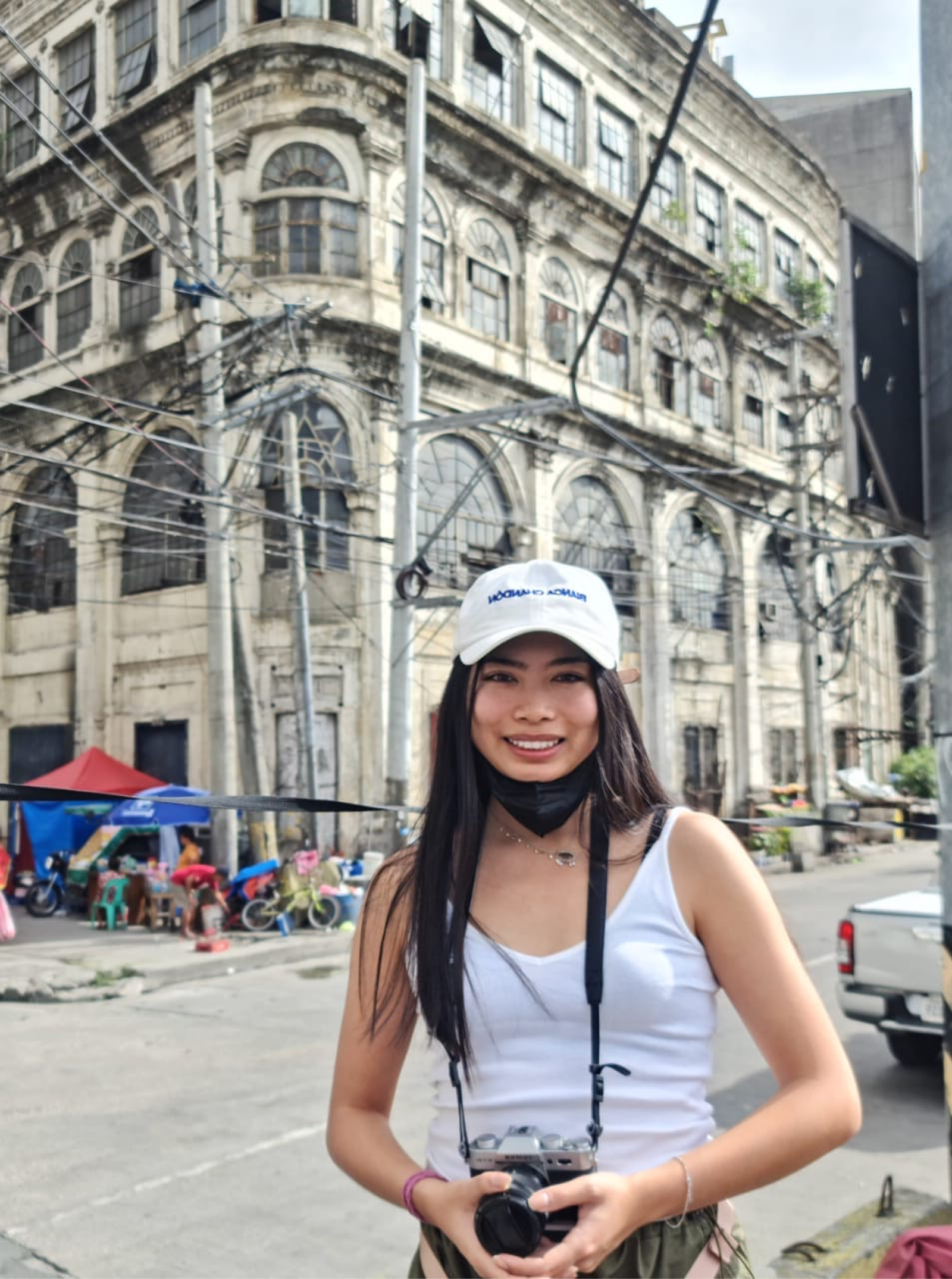

What were some of the most surprising or enlightening discoveries you made about Manila’s architecture during your research?
Honestly, I was just amazed at how positively the guide was received in Manila by the architecture community and surprised by the amount of activity already happening. I hope that the launch of Architectural Guide Manila amplifies these. So many prominent architects were present at our book launch at The Met! They shared such kind words about the book. Erold Enriquez and the Arc Lico team executed the whole event extremely professionally. And people like you amplified the launch and its outreach so elegantly! I had always moved through the project cautiously and with a particular fear that my efforts might be rejected because I wasn’t born and raised in Manila. But on the day of the launch, I felt welcomed and validated in all the work I had put into understanding Manila’s architecture.
Besides that, I think there is a pleasantly surprising sense of humor in some of Manila’s modern architecture: the Ronac Art Center’s mattress spring-inspired staircase, the bananas and mangoes on the ceiling of the Metropolitan Theater, and, of course, the brutalist KFC. It’s almost PoMo. We Filipinos are hilarious, though, so I’m almost not surprised! We should play into it more.
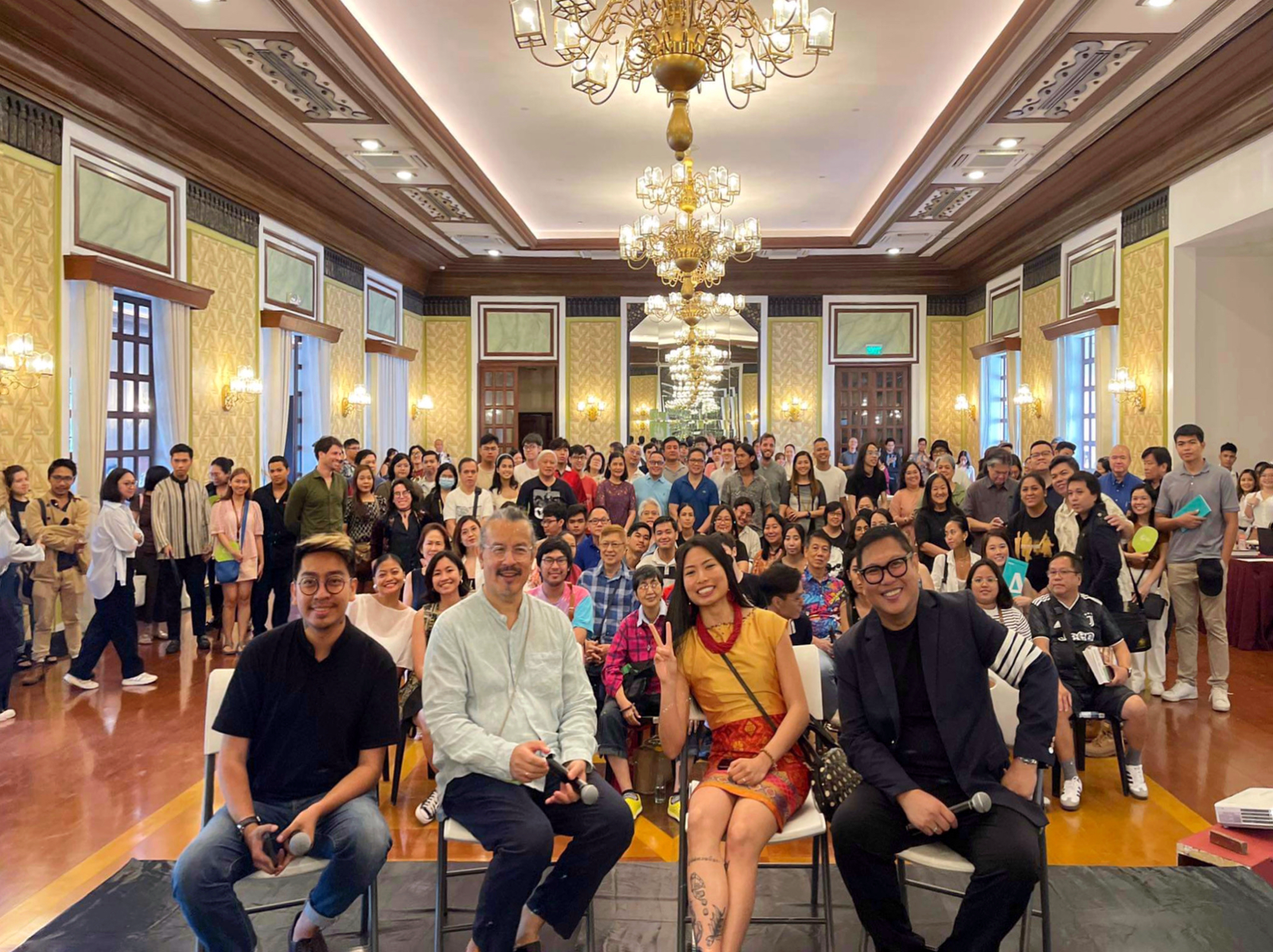

The book features a diverse range of contributors from different backgrounds. How did you ensure these voices were represented, and why was it essential to include such a variety?
Everybody experiences the built environment, so I have never believed in limiting my sources of knowledge solely to the architects designing that environment. Neferti Tadiar, who teaches women’s and gender studies and whom I met through a workshop I helmed at the Alfredo F. Tadiar Library, wrote a beautiful reflection for the guidebook on the story of her family home in San Fernando, La Union. It was converted into the Tadiar Library, the setting in which we became acquainted with each other. Even within the architectural field, you have different perspectives from practitioners and academics, so I considered those, too. My family doesn’t come from any architectural lineage. I always imagined how they would interact with my book, whether they would get bored or feel excluded by the language. In this way, I continuously strive towards more accessibility in the arts and architecture.
Architectural Guide Manila includes both well-known and offbeat architectural works, with surprising additions like the Manila Chinese Cemetery mausoleums. Why was it necessary to showcase such a mix?
The Manila Chinese Cemetery has incredible mausoleums, period! In the same way that the city itself can be fragmented, existing literature on architecture in Manila can also be quite fragmented—skewed more towards luxury hotels or monumental architecture, for example. I wanted my book to bring all the fragments of existing literature together into a cohesive guide, and this necessitated a mixture of “high” and “low” buildings, which, to me, are all part of the public cityscape.
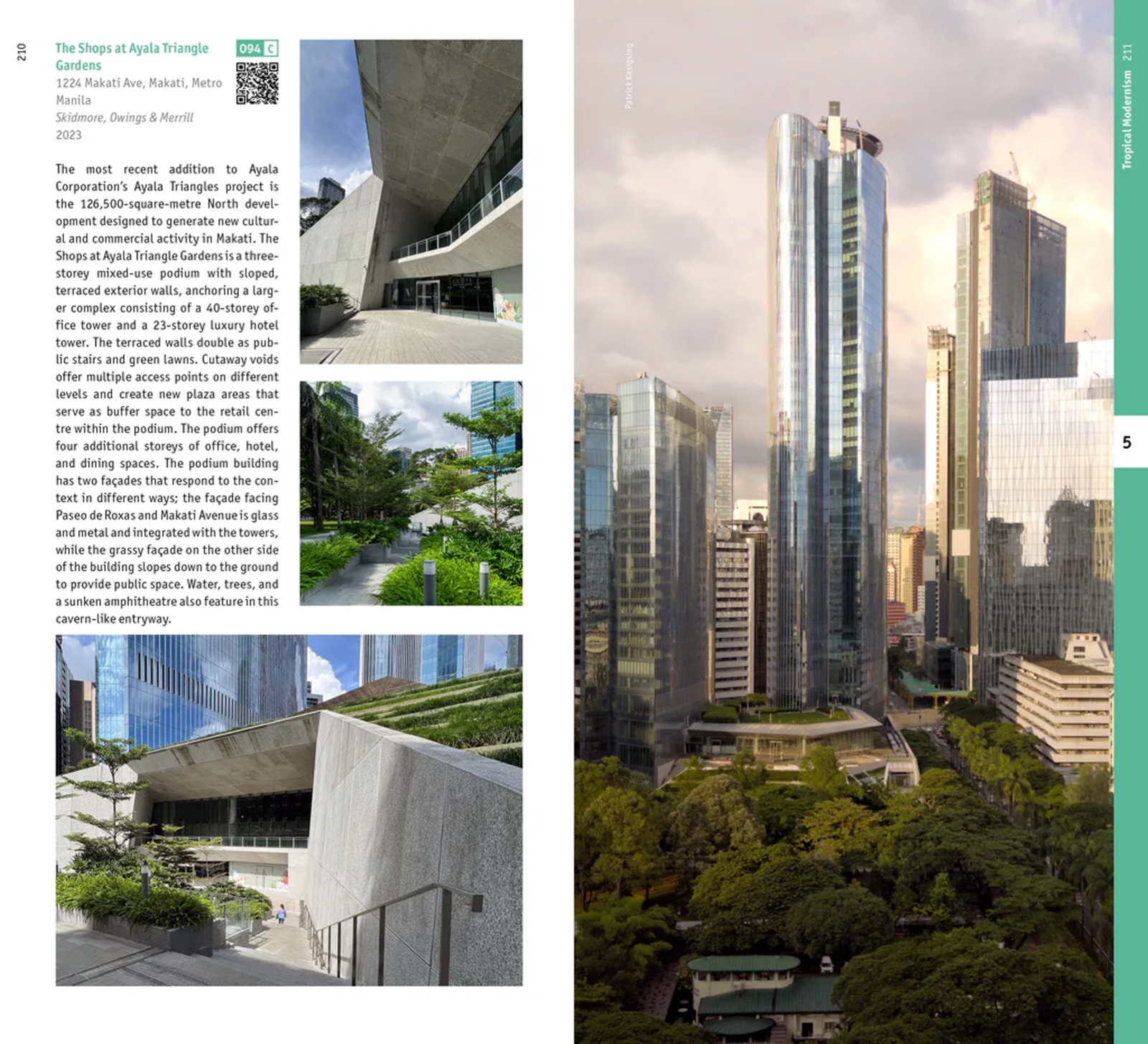
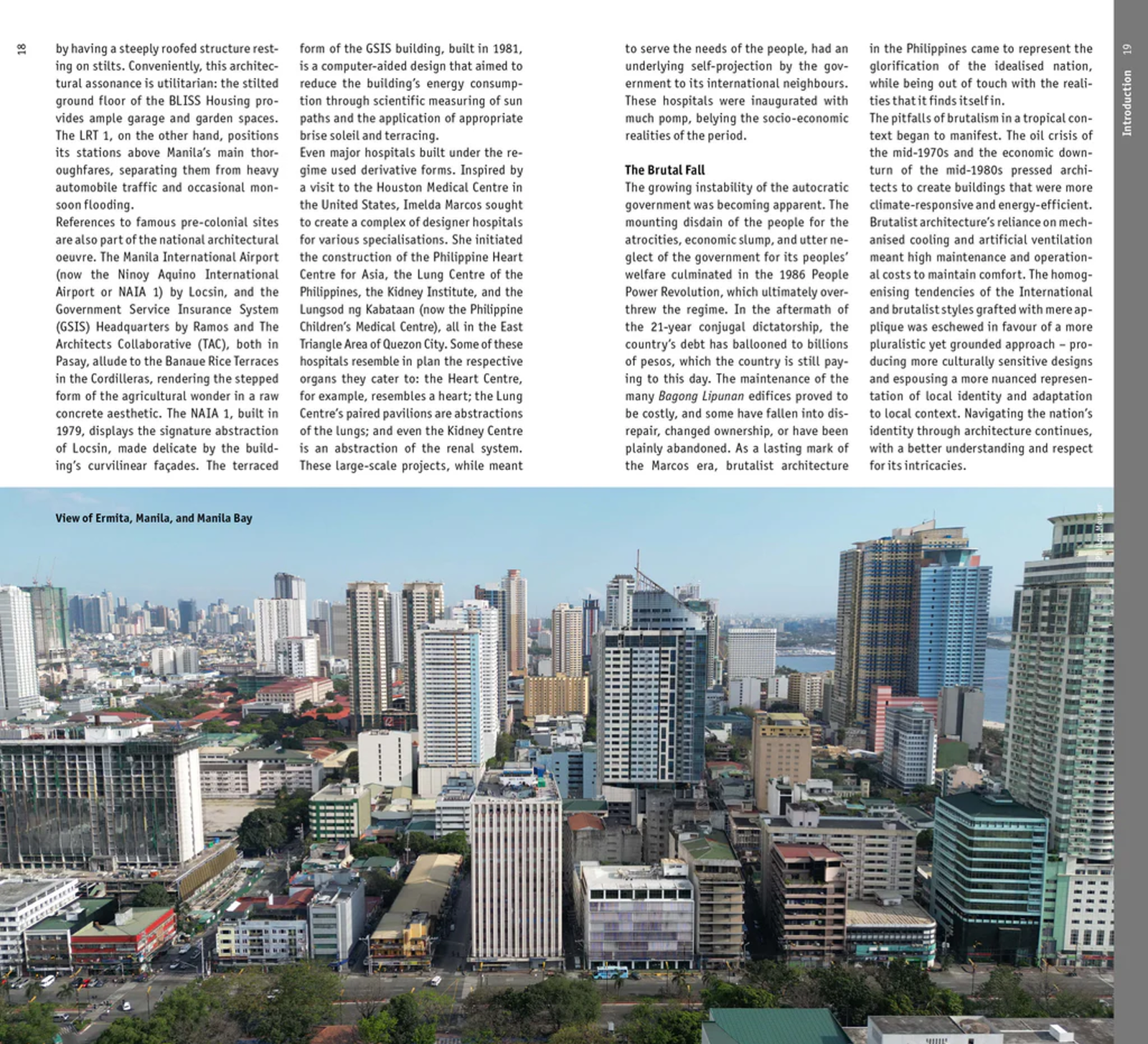


Do you see Manila’s architectural identity as both fragmented and unified? If so, could you elaborate on this duality?
Manila’s architecture is fragmented in the sense that you can have completely different experiences from neighborhood to neighborhood—that you are often moving through the city by vehicle, and therefore seeing destinations as disparate sites rather than on a linear timeline—that there is often so much sensory stuff happening around you, you don’t know where to look! But I believe that there must be something unified in this identity, too, for it to be exported to so many different countries across the diaspora in North America, the Middle East, and Europe and still be able to forge some common and innate understanding of what feels “Filipino.”
Indeed. Now, what insights or lessons from this project would you say are particularly relevant for local architects, heritage activists, and students in the Philippines?
I want this project to make them feel empowered by what they’re already doing and to see that the world can appreciate the Philippines’ architecture and architectural stories. And that the yardstick for this value and appreciation should not just be copied and pasted from Western Europe. That this architecture exists within a completely different matrix of variables. Ironically, I can acknowledge that I’ve personally benefited from the fact that Filipinos often react positively to validation from the international community since I’ve written for an internationally known publisher and saw this play out at the launch. But these buildings I featured existed before I photographed them and laid them out nicely in a book! Some general lessons for students: follow your heart, put in the work, and collaboration is critical. Also, those moments of panic and anxiety are telling you something about the path you’re on; confront them now, it’ll make sense later.

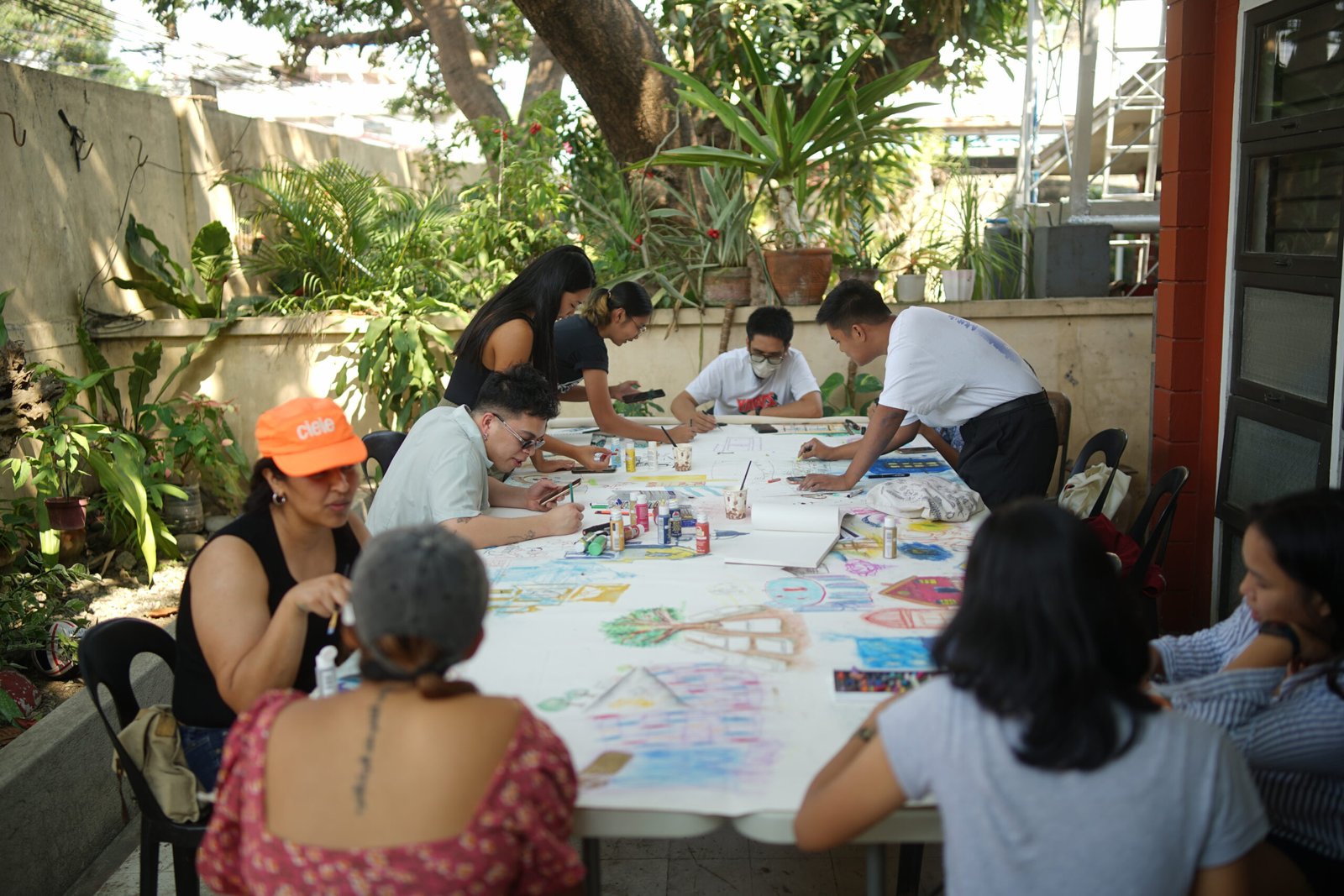
How do you hope this guide will impact the understanding and appreciation of Manila’s architectural heritage among international travelers and the global architectural community?
When I presented Architectural Guide Manila in Naples last month, the Filipino Consulate attended, and they were delighted to see their country represented on the international scene beyond the typical beaches and bahay kubos. (Naturally, the Italians who were present had many questions for me about the bahay kubo, but now they know that there is also more out there to explore.) As we know, many tourists come to the Philippines for its beach resorts and more idyllic islands, using Manila as a gateway. But Manila demands time and empathy to develop a genuine understanding and appreciation of it, as I have. So, what I want is for this guide to guilt travelers into being more responsible and active participants when they pass through Manila! To learn its stories, historical context, hidden gems, and emerging trends. And the global architectural community can appreciate the many Filipino architects who live and work in Manila so that they are empowered to continue designing.


Considering your roles as a writer, artist, architect, and identity as a Filipino, how do you envision applying the insights and experiences from this book?
This project has resulted in many friendships with Filipino architects, writers, artists, curators, scholars, heritage enthusiasts, etc., that I admire. I feel that these friendships will last a lifetime and that collaborations are also inevitable, but I am not one to over-plan or over-specify anything coming up in the future. For me, having this second home to come to and get inspiration—from the local environment and from the work of my friends—is something truly special, and I know it will shape me in the long term.
Through this book, I learned how to take proper architectural photographs, how to write about buildings in an engaging and objective way, and how to liaise with architects of varying dispositions and potential sponsors while maintaining integrity. While I think that successfully completing a book and birthing it into the real world teaches you many different skills, it also expands your general understanding of what you are capable of as a writer, architect, or cultural producer. I almost feel like everything is possible right now! That’s how it feels to make a book at my age.
Congratulations again, and thank you for all the hard work you have put into Architectural Guide Manila! We touched on this a bit in the previous question, but let’s talk about the future. How has the book experience shaped your future ambitions and creative vision? What exciting new paths or projects has it inspired you to pursue next?
I want more members of the Filipino diaspora to experience the fulfillment and healing that I was able to get from being in the Philippines with a sense of purpose. I want to keep returning, but I also want to share that feeling of homecoming. I’ve already received a grant from the Canadian government that has allowed me to bring together a community of Filipino-Canadian cultural workers through research around art publishing, so on that front, things are already falling into place. I want to do something one day more in the realm of moving images, maybe a documentary series across all the provinces of Canada or an animation of some sort. It’s an ambitious future project, but I’m manifesting it now. I would never limit myself to one medium. Working in one for so long makes me think of all its counterpoints. I’d also like to get to know the architecture of Cebu or Iloilo… But, for now, I’ll probably get some rest. •
